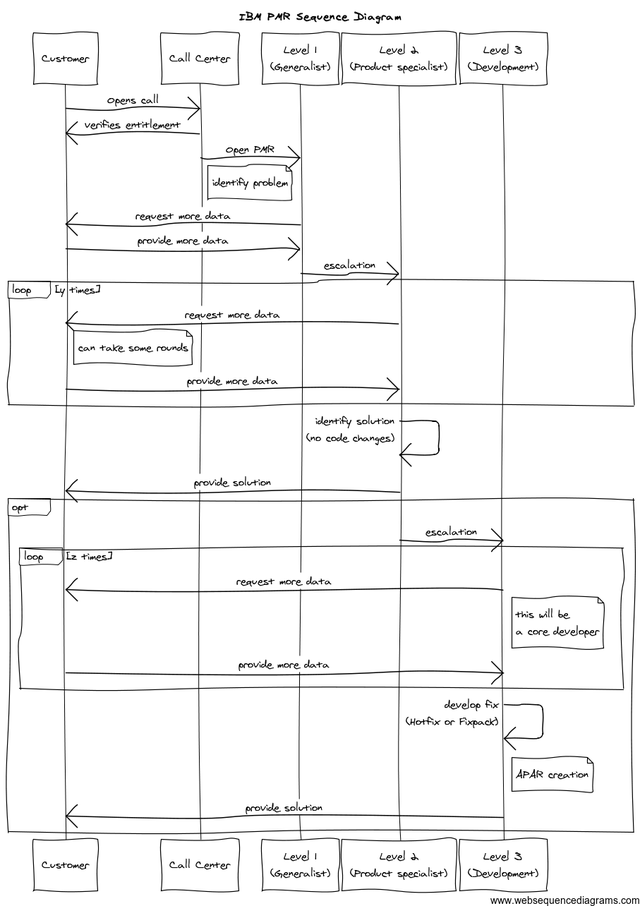Inside the IBM Support Process
No software runs flawless (even if the product is named after a fruit), so from time to time you need to interact with support. The entry point for IBM support is the IBM Support Portal or the support call center. Behind that front is quite a bit a process that is designed to be predictable, repeatable, measurable and ensure that customers get the right level of attention from the right level of expertise. Scribbled on a napkin it looks like this:

and generates the graphic for you. Would make an awesome XPages control

(click on the image to get a bigger picture)
So you are just 2 degrees away from core development. Level 1's responsibility is to ensure that as much evidence as possible gets provided. This is often the most time consuming task and would tie down product experts quite a bit. It is often a point of contempt since you are not talking to a product expert yet (ironics would say: nothing can be called a process if it isn't broken"). The trick here: call in prepared to keep that phase as short as possible. Also be clear what support does: " Technical question support allows you to obtain assistance from IBM for product specific, task-oriented questions regarding the installation and operation of currently supported IBM software. Short duration problems involving but not limited to: "
- Installation
- Usage (how-to)
- Specific usage/installation questions for documented functions
- Product compatibility and interoperability questions
- Technical references to publications, such as Redbooks or manuals
- Assistance with interpretation of publications
- Providing available configuration samples
- Planning information for software fixes
- IBM database searches
- Performance analysis
- Writing, troubleshooting or customizing client s code
- Extensive configuration questions
- Recovering a database, or data recovery
- Consulting
title IBM PMR Sequence Diagram participant Customer participant "Call Center" participant "Level 1\n(Generalist)" as Level1 participant "Level 2\n(Product specialist)" as Level2 participant "Level 3\n(Development)" as Level3 Customer->Call Center: Opens call Call Center->Customer: verifies entitlement Call Center->Level1: Open PMR note left of Level1: identify problem Level1->Customer:request more data Customer->Level1:provide more data Level1->Level2:escalation loop y times Level2->Customer:request more data note right of Customer: can take some rounds Customer->Level2:provide more data end loop Level2->Level2: identify solution\n(no code changes) Level2->Customer:provide solution opt Level2->Level3:escalation loop z times Level3->Customer:request more data note right of Level3: this will be\na core developer Customer->Level3:provide more data end loop Level3->Level3:develop fix\n (Hotfix or Fixpack) note right of Level3:APAR creation Level3->Customer:provide solution end
and generates the graphic for you. Would make an awesome XPages control
Posted by Stephan H Wissel on 05 April 2012 | Comments (3) | categories: IBM